Heading 1
Heading 2
Heading 3
Heading 4
Heading 5
Heading 6
Lorem ipsum dolor sit amet, consectetur adipiscing elit, sed do eiusmod tempor incididunt ut labore et dolore magna aliqua. Ut enim ad minim veniam, quis nostrud exercitation ullamco laboris nisi ut aliquip ex ea commodo consequat. Duis aute irure dolor in reprehenderit in voluptate velit esse cillum dolore eu fugiat nulla pariatur.
Block quote
Ordered list
- Item 1
- Item 2
- Item 3
Unordered list
- Item A
- Item B
- Item C
Bold text
Emphasis
Superscript
Subscript
About This Simulation
Help out a desperate soccer player who has been badly injured. Will you able to help the sports physician in using the tissue engineering technique to restore damaged articular cartilage?
Learning Objectives
- Explain the basic principle of tissue engineering
- Describe the articular cartilage injuries and its treatment
- Define the types of crosslinking to synthesize hydrogels:
- Ionic crosslinking
- Michael addition crosslinking
- Enzymatic crosslinking
- Radical crosslinking
- Identify natural and synthetic polymers
- Analyze the synthesized hydrogels’ mechanical properties using rheology.
About This Simulation
Lab Techniques
- Rheology
- Ionic crosslinking
- Michael addition crosslinking
Related Standards
- No direct alignment
- No direct alignment
- No direct alignment
Learn More About This Simulation
Despite the notorious diving and fake foul in a soccer game, players are prone to serious injuries. One of the most common injuries is damaged articular cartilage in the knee. Cartilages cannot self-repair, and thus need replacement. In the Tissue Engineering simulation, you will learn the required elements of synthesizing a tissue for cartilage replacement. Will you able to produce hydrogels for repairing the articular cartilage?
Finding the essential elements in tissue engineering
You will be introduced to a sports physician who needs your help in treating an injured soccer player. In this simulation, you will learn three principle elements of tissue engineering and apply them to produce the scaffold of articular cartilage replacement. You will also explore the characteristics of two polymers that you will be using in creating the hydrogel scaffold throughout the experiment.
Synthesizing hydrogels scaffold
You will perform two crosslinking experiment, ionic and Michael addition method, to create the hydrogels scaffold. You will have to choose the polymers you want to use in the experiment based on what you’ve learned in the previous mission. At the end of each experiment, you will watch the chemical or physical reaction between the polymers that take place inside the hardening hydrogels.
Analyzing the mechanical properties of hydrogels
Finally, you will have obtained several hydrogels scaffolds that have been created using different crosslinking methods. Using a rheology approach, you will analyze the mechanical properties of each hydrogel. This virtual lab is equipped with a rheology simulator which will enable you to experiment with a various combination of parameters such as crosslinking method, polymer concentration, and temperature. In the end, you will have to decide which combination of polymer and crosslinking method is most suitable for the articular cartilage replacement. Will you able to ease the soccer player’s suffering?
Experience Labster for Yourself
75% of students show high engagement and improved grades with Labster
Easily bolster your learning objectives with relevant, interactive content
Practice a lab procedure or visualize theory through narrative-driven scenarios

For Science Programs Providing a Learning Advantage




















FAQs
Find answers to frequently asked questions.
Heading 1
Heading 2
Heading 3
Heading 4
Heading 5
Heading 6
Lorem ipsum dolor sit amet, consectetur adipiscing elit, sed do eiusmod tempor incididunt ut labore et dolore magna aliqua. Ut enim ad minim veniam, quis nostrud exercitation ullamco laboris nisi ut aliquip ex ea commodo consequat. Duis aute irure dolor in reprehenderit in voluptate velit esse cillum dolore eu fugiat nulla pariatur.
Block quote
Ordered list
- Item 1
- Item 2
- Item 3
Unordered list
- Item A
- Item B
- Item C
Bold text
Emphasis
Superscript
Subscript
Labster is hosted online, which means that students only have to login from their internet browsers once an account is created.
Labster is only available for purchase by faculty and administration at academic institutions. To procure Labster, simply reach out to us on our website. Schedule a demo, book a meeting to discuss pricing, start a free trial, or simply fill out our contact form.
Labster simulations are created by real scientists and designed with unparalleled interactivity. Unlike point and click competitors, Labster simulations immerse students and encourage mastery through active learning.
Labster supports a wide range of courses at the high school and university level across fields in biology, chemistry and physics. Some simulations mimic lab procedures with high fidelity to train foundational skills, while others are meant to bring theory to life through interactive scenarios.



















